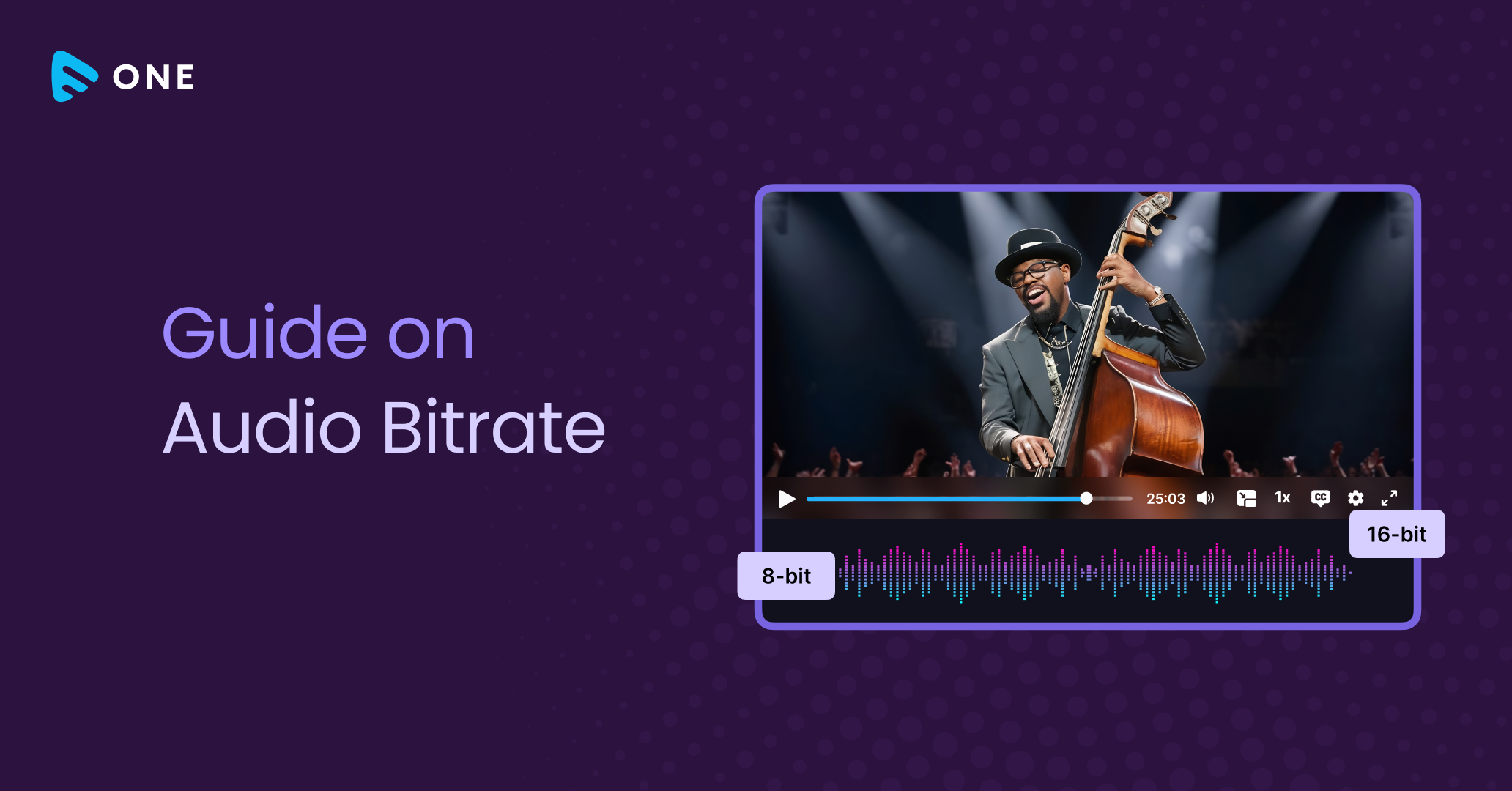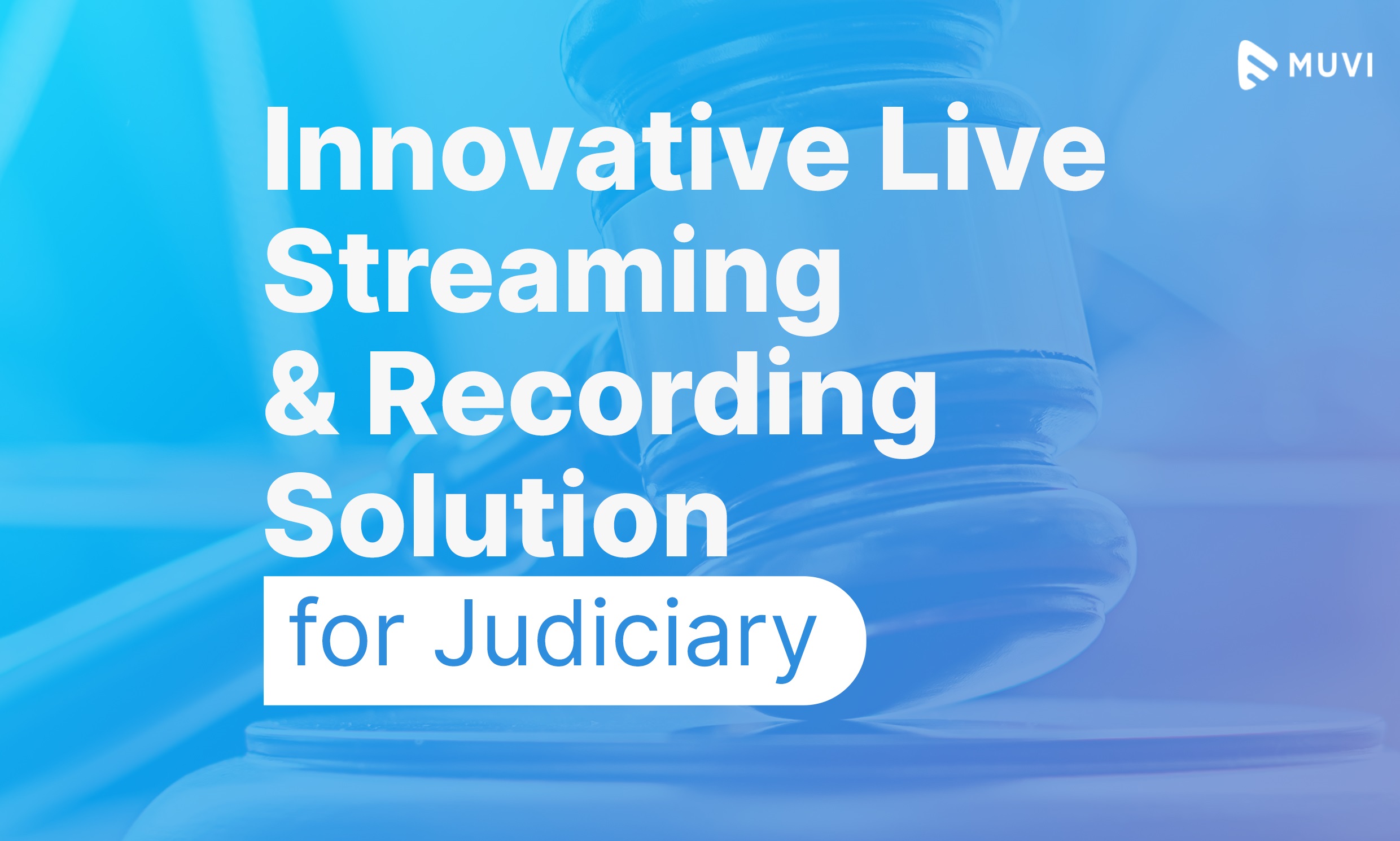If you are trying to find out the correct bitrate for audio streaming, you are at the right place. The concept of audio bitrate is an important term in digital audio that has a tremendous influence on sound quality, file size and the pleasure of listening to audio. If you’re a music enthusiast, a podcaster, or an audio pro, this column’s going to show you all that you need to understand about bitrate and how it can help you make decisions regarding recording, compressing, and playing audio.
What is Audio Bitrate?
Audio bitrate is the amount of data processed every second. Bitrates ideally determine the audio quality of a file and is represented in kilobits per second (kbps). For example, a high quality audio generally has a higher bitrate and vice versa. However, it must be noted that higher bitrates requires greater bandwidth and results in larger-sized files.
Types of Audio Bitrate
There are two kinds of audio bitrates: Constant and Variable.
Constant Bitrate (CBR): In CBR, the data rate remains constant throughout the audio file. Since CBR delivers predictable streaming performance, it’s preferred for streaming and broadcasting purposes.
Variable Bitrate (VBR): As opposed to CBR, in Variable bitrate the data rate fluctuates based on the complexity of audio that is being encoded. For example, quieter passages would take less data, while more data would be needed for the more complex passages (during musical crescendoes). As the file reduction is optimized, VBR attains comparable quality to CBR.
For more information, read our blog CBR Vs VBR: Which is Best for Your Online Video Platform
Relationship Between Bits Per Second (bps) and Audio Fidelity
Audio fidelity, or the accuracy of sound reproduction, is closely tied to the bitrate. A higher bps often translates to better sound quality because more data is used to represent the audio signal accurately. This results in a richer and more detailed sound.
For example, a bitrate of 128 kbps is considered standard for MP3 audio. However, streaming at 256 kbps or higher can provide near-CD quality sound. The trade-off between bitrate and audio quality is a significant consideration for anyone involved in streaming audio content.

How Bitrate Effects on Audio Quality
Higher Bitrate:
- It offers richer, clearer and finer detail.
- Offers better preservation of nuances in music like dynamics and tonal variations.
- Great for high fidelity formats and critical listening situations such as classical music or studio recordings.
Lower Bitrate:
- Usually results in audible loss.
- Can cause distortion in the sound).
- Good for pop music and podcasts.
Compression and Artifacts
As audio files are encoded down to reduce their bitrate, which has some frequencies and nuances. This compression can result in auditory artifacts:
- Aliasing: Unwanted frequencies put in the compression process.
- Pre-echo: A bit delayed or distorted sounds.
- Swishing sounds: Habitual in recordings either lower than the intended bitrate or at the actual bitrate during complex musical passages.
Audio Bitrate Settings for Recording:
Audio Scenario | Recommended Settings |
Professional music recording | 1411 kilobits per second (Kbps) for CD quality, or 960 Kbps for FLAC. |
Podcast or audiobook recording | 192 kbps or higher |
Online meetings | 128 kbps |
Music streaming | Varies from platform to platform |
WAV files | 1,411 Kbps |
MP3 files | 96 to 320 kbps |
Mono recordings | 128 kbps |
Stereo recordings | 384 kbps |
Recording with video | 192 kbps |
Factors Affecting Audio Bitrate
Several factors affect audio bitrate such as:
Lossless Formats
Lossless audio are audio formats that store the entire audio data, resulting in high bitrates and large file sizes. Examples: WAV, FLAC, and ALAC.
Lossy Formats
Lossy formats have shorter file sizes as these formats compress the audio data by discarding some unimportant information. However, it does affect audio quality a little. Examples: MP3 and AAC.
Sample Rate
The sample rate measures the number of audio samples taken per second (usually expressed as kilohertz (kHz)). If the sample rate is high it indicates greater accuracy in the representation of the original audio recording. However, higher sample rates also means a larger file size.
Bit Depth
The number of bits used to represent each sample of audio is referred to as bit depth. While Higher bit depths offer greater precision while playing music, it results in larger file sizes. Common bit depths are 16-bit and 24-bit. 16 bits is the standard bit depth for CD audio, which gives you decent sound quality despite a smaller file size. On the other hand, a bit depth of 24 bits will yield a finer sound quality but the file size would increase.
Compression Algorithm
The compression algorithms are used to reduce file size and they can impact bitrates as well. Lossy compression algorithms like MP3 and AAC can vary in their efficiency, affecting the resulting bitrate and quality.
Audio Complexity
Complexity of audio affects audio bitrates as well. This includes the range of frequencies, dynamics, and instrument count, etc. More complex audio requires higher bitrates to preserve detail.
Network Conditions
In streaming scenarios, network bandwidth and latency can limit the achievable bitrate. Lower bitrates may be necessary to ensure smooth playback over slower connections.
Platform, Devices and Software
Audio bitrates also vary depending on the platform for playback and specific use cases like streaming, high-fidelity listening, etc. So, while lower bitrates are suitable for streaming, higher bitrates are required for high-quality recordings and playback.
Bitrate Requirements for Different Music Genres
- Classical Music: Requires higher bitrates to maintain the integrity of the wide dynamic ranges and subtle acoustics. Optimal settings typically range from 256 kbps to 320 kbps.
- Jazz: Similar to classical music, jazz benefits from higher bitrates, usually within the 192 kbps to 320 kbps range, to capture the detailed instrumentation and spontaneous improvisations.
- Rock and Pop: These genres, which often feature more compressed sound stages, can function well with bitrates between 128 kbps to 192 kbps.
- Electronic Dance Music (EDM): Since EDM includes a variety of synthesized sounds and beats, a bitrate range of 192 kbps to 320 kbps is ideal to retain its depth and punch.
- Hip-Hop/Rap: Characterized by deep bass and rhythmic elements, hip-hop streams well at bitrates from 128 kbps to 192 kbps.
How to Change the Audio Bitrate
You can change the audio bitrates easily with online audio bitrate converter tools like Convertio, Freemake Audio Converter, VSDC Free Audio Converter, Xilisoft Audio Converter etc. You can also change other audio parameters like sample rate and bit depth with these tools.
Here’s a step-by-step guide to converting audio bitrate using a paid or free audio bitrate converter.
- You have to download and install your preferred audio bitrate converter software.
- After installing, you have to launch the software on your PC.
- Select the audio file you wish to convert.
- Choose the right audio file format (e.g., MP3, WAV, AAC) and set the bitrate (64 kbps, 128 kbps, 256 kbps, and so on)
- Choose the destination folder for your converted file.
- Start the conversion process.
Troubleshooting Common Audio Streaming Issues
Audio issues can arise even with optimal setup. Here are some troubleshooting tips:
- Dropouts/Buffering: Ensure that your upload speed is sufficient for your chosen bitrate. Lower the bitrate if necessary.
- Distorted Audio: Ensure that your audio input levels are stable and aren’t too high, which can cause clipping. Adjust input gain settings in your streaming software.
- Out-Of-Sync Audio: Audio and video desync can be fixed by adjusting the audio sync offset in your streaming software’s settings.
- Low Quality: If the audio quality is subpar, consider increasing the bitrate or switching to a more efficient codec like AAC.
Best Practices for Maintaining Audio Fidelity in Music Streams
To maintain the highest audio fidelity in music streams, consider the following best practices:
- Select the Correct Codecs: Use AAC or Opus which are advanced audio codecs and provide excellent sound quality at lower bitrates compared to older codecs like MP3.
- Using Good-Quality Source Files: Ensure good quality sound of the original recording for preventing further degradation when compressing for streaming.
- Avoiding Over-Compression: Especially for music files, over-compressing audio files can result in loss of audio detail and dynamic range.
- Monitor Streaming Networks: You need to monitor network conditions to ensure that bandwidth is sufficient to handle high-quality streams without buffering.
Stream High Quality Audio with Muvi One
Through its advanced encoding capabilities, Muvi One automatically adjusts audio bitrate based on network conditions, device capabilities, and other relevant factors. Adaptive bitrate streaming ensures smooth playback and consistent quality across varying internet connections.
Not only it lets you opt for the best bitrate easily, but offers more – your own branded domain, chrome casting, metadata management, scalable CDN, multiple monetization, and the list goes on. To try it first hand, take a 14-day free trial today!
















Add your comment